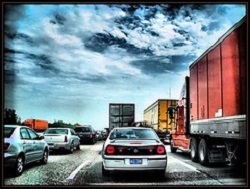
February 18, 2015
A couple of weeks ago, Assembly Speaker Toni Atkins shot an arrow into the air that has enlivened a perennial debate about how California can pay for its transportation system.
During a speech to a transportation organization and through a press release, the Speaker proposed a plan to raise $10 billion dollars over the next five years—about $2 billion a year—to “address the state’s transportation challenges.”
The funds would be raised by shifting some money around within the budget, and then establishing a new road user charge. Almost as fast as you can say “pothole”, I started receiving emails from Club members around the state who were asking me what the Speaker meant by this proposal.
Why so much interest by environmentalists?
First, transportation is one of the single largest sources of air pollution in the state. That includes the smog and other ground-level pollution that damages hearts and lungs, as well as the greenhouse gas emissions that disrupt the climate. There are 33 million cars and light- and medium-duty trucks registered in California, more than in any other state in the U.S. And that number doesn’t include the big heavy duty trucks that carry freight around the state.
Second, road congestion in many parts of the state has become nearly unbearable. As Speaker Atkins noted in her speech to the California Transportation Foundation, Californians waste nearly $19 billion in time and fuel while stuck in traffic. The average San Diego traveler can expect to spend 67 hours a year waiting in traffic, while the average San Francisco traveler can expect to spend 80 hours stuck in traffic.
Third, the way we use transportation is changing, and will continue to change. A new report by the federal Department of Transportation identifies some fascinating trends in travel habits. A few notable trends include that per-capita vehicle miles traveled has been declining nationally since 2006, even before the Great Recession began. There is no single reason for this trend, but one notable one is that millennials—people between the ages of 18 and 34—are driving much less.
Whether because of pollution, traffic, or less desire or need to move, everything points to needing to approach the transportation system differently than has been done in the past. The standard practice by transportation agencies, including our beloved CalTrans, has been to focus on building highways and heavily traveled, multi-lane surface roads designed primarily for automobiles. All the indicators say that standard practice will no longer work.
In California, the California Transportation Commission (CTC) estimated in 2011 that the state has about a $193 billion shortfall in the amount of money needed just to fix and maintain the transportation system through 2020. And that doesn’t include money to improve the system, especially bike, pedestrian and transit improvements.
Speaker Atkins’ proposal for raising $10 billion for highways, bridges and roads deserves attention. It won’t make a huge dent in the funding shortfall predicted by the CTC, but her proposal can make a difference in how California’s transportation system adjusts to the new realities. If that $10 billion is raised and spent the same way as in the past, it will be like throwing good money after bad.
But, if the funds are distributed in a way that, for instance, insures that local road improvements include fixing potholes and making them friendlier to transit, pedestrians and bicyclists, then the money will make a long-term difference for the better.
If the funds are used to establish more transit express lanes on roads and highways, they will make a difference.
However, if the funds are just spent to build some extra highway lanes, the new funding won’t mean much. It won’t get us clean air, it won’t ultimately reduce congestion (except possibly for a brief period after the new lanes open), and it won’t provide the kind of system that California needs.
The Speaker’s office tells me that details for the funding proposal, including whether the user charge will be a real user fee based on vehicle miles traveled or some other metric or just a flat fee, are still to be worked out. That’s fair. It’s early in the two-year legislative session.
Speaker Atkins did a good thing by presenting the proposal. Transportation funding isn’t an easy discussion and it takes nerve to lead the charge.
Now everyone, including environmentalists, will be trying to help direct where the arrow lands. If you have a good idea about how to raise or spend those dollars, let me know.
Sincerely,

Kathryn Phillips
Director
Sierra Club California is the Sacramento-based legislative and regulatory advocacy arm of the 13 California chapters of the Sierra Club.
Please consider becoming a sustaining donor.